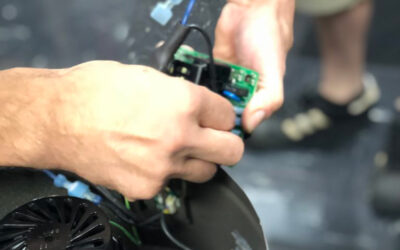Benefits of a Central Vacuum System Installation
There are many reasons to install a central vacuum system when building a new home or even adding it in an existing home. Many people are unfamiliar with the powerful benefits of a central vac and might have heard or read some negative comments about these types of systems. As a person who has been in the business for over 35 years, let me address those first:
Why the Negative Rumors? Usually Easily Fixed Problems!
The number one reason people are dissatisfied with their central vac system: improper or careless installation years before. Many times, a story is passed on from a friend or family member. “Well my parents had a central vacuum; it lost suction, so they stopped using it”. This could be for any number of reasons but something as easily solved as a pipe becoming disconnected could cause the whole system to lose power. The unfortunate reality is there are few companies who install and service central vacuums, so even simple issues are never addressed. Typically, these problems are easily fixed if only homeowners took action to get them repaired! At Central Vacuum Experts, we have many years repairing other companies’ central vacuum installations and installing our own to consistently high standards.
Why Those In the Know LOVE Their Central Vacuum Systems
It’s always satisfying to hear the many reasons why people love their central vacuum systems. Convenience is typically the number one reason, followed by quiet operation and strong suction. For those with sensitivities to allergens or other breathing issues, the fact that no particle laden air is exhausted back into the living space is a very important benefit. An added bonus of having a central vacuum can be an important feature when selling your home. I address the specifics of benefits below.
The most important advantages for central vacuum over portable vacuums are: indoor air quality, quiet operation, very little space required for the accessories,lasting value over the life of your home and of course, much greater suction than most conventional vacuums, particularly robot and portable vacuum cleaners like stick vacs, not to mention more convenient and cleaner than an old fashioned dustpan and broom!
What is a Central Vacuum System?
Rather than needing to lug around a heavy vacuum cleaner from room to room, a central vacuum system (also known as a whole-house vacuum) consists of a built-in central vacuum power unit found in a central but out-of-the-way location in the home such as a basement or utility room. The power unit contains the vacuum motor as well as a dirt canister or bag. From this central vacuum unit, PVC pipes that serve as the vacuum tubing are routed through the walls to various wall inlet valves placed at convenient locations throughout the home. This tubing can run through the attic, crawl space or other out-of-sight locations, making the entire system as hidden as it is convenient! We specialize in the retractable hose systems called Hide-A-Hose where a single, long retractable hose (up to 60 ft.) stores itself in the central vacuum tubing. When you’re ready to vacuum, simply pull out as much hose as you need, connect the handle to the floor brush or carpet nozzle. We also install conventional central vacuum systems. To start the vacuum, a lightweight hose is simply inserted into one of the wall inlets. You activate the suction power of the central vacuum on the hose handle. Once the vacuuming in one location is finished, simply unplug the hose and move to the next wall inlet! When the home is fully vacuumed, detach the power brush and store the vacuum hose until its next use.
With a central vacuum, all the dirt, dust particles, and dander go straight to the central vacuum canister or bag, which will need to be emptied or replaced only about every 6 months.
What Different Types of Central Vacuum Units Are There?
There are two main types of central vacuum units: filtered and cyclonic. Both systems remove debris from the air and maximize airflow to ensure a regular, powerful vacuum. Filtered systems typically use a HEPA-quality bag and high efficiency filter to clean the air taken into the system by the vacuum. After a few years, these filters need to be cleaned and, if necessary, replaced. Cyclonic systems, however, use centrifugal force and gravity for filtration, depositing the dirt into a canister. While these units also have filtration, it typically needs to be cleaned much more often with a bagged system.
The central vacuum system power unit that is ideal for your home will depend on three factors: whether you get the retractable or conventional hose system, the square footage and whether you prefer a bag or cyclonic unit. For homes of less than 5,000 square feet, there are several power options. Larger homes, however, will require a more powerful motor to ensure even more powerful suction.
For central vacuum bag units, you’ll need to remove and replace a bag from the unit when it’s full, simply depositing it in the trash. With cyclonic units, you’ll need to dump out the dirt from the canister then clean it thoroughly before placing it back into the unit. Regardless of which you pick, you’ll be disposing of debris much less often compared to a traditional vacuum!
When selecting your power brush, you’ll have a choice between an electric, battery operated or air-driven power brush. This is the part of the vacuum that actually will be cleaning your carpet and area rugs. The decision usually comes down to personal choice; installing an air-driven system may cost a bit less as all of the wall inlets won’t need to be wired for electricity. You’ll also have a wide range of vacuum brush accessories to choose from like a floor brush, dusting and upholstery attachments.
How Many Wall Inlets Would My Home Need?
The number of inlets as well as their locations are based on which system you choose. With a conventional system, it is recommended to have one outlet for every 700 square feet of a home. With the Hide-A-Hose system, it’s recommended that multi-story homes have at least one inlet on each story of the home. A professional installer will be able to give you advice on what the best placement for outlets might be in your home. Also a time-saving and convenient option; automatic dustpan inlets that allow you to sweep debris right into wall vent using a regular broom.
How Expensive are Central Vacuum Systems?
Central vacuum systems are more expensive than a typical upright or portable canister vacuum. The installation, power unit and all the necessary attachments can cost up $1500 or more. Given the necessary investment, you may be questioning why you would choose a central vacuum system over a traditional vacuum cleaner.
One key reason: as the technology behind portable and robot vacuum cleaners has become high tech and more sophisticated, their cost has risen as well. Today there’s not that much different between the cost of a name brand portable vacuum and a central vacuum system! If you’re on the fence about whether a central vacuum system is right for you, here’s what we hear from customers who ‘take the plunge’ and install a central vacuum system – they would never go back to a portable vacuum. Why? They’re so easy to use! And ease-of-use isn’t the only key benefit of a central vacuum system . . .
Key Benefits of a Central Vacuum System
Enjoy Healthier Air
Central vacuum systems take all the dust and debris from your living space, depositing it in a receptacle that’s outside your living areas. This means no recirculating air full of dust particles, allergens, dander and other debris that lower the indoor air quality of your home.
DON’T Feel the Noise
With a central vacuum system, gone will be the days of terrified pets and shouted conversations over sounds like a jet engine blasting through your home. Since the vacuum motor of a central vacuum system is usually far from the living area, in a garage or basement for example, the noise is minimal, bringing an end to the deafening experience of many conventional vacuums.
A More Powerful Vacuum Motor Means A Deeper Clean
With 3-5 times the suction power of a traditional vacuum, central vacuum systems are more efficient and powerful than portable vacuum cleaners. You’ll see the difference such a deep cleaning has on the look and life-span of your carpeting, drapes, and furniture.
From Chore to Convenience
A central vacuum system means an end to the worst aspects of vacuuming: no dragging a heavy vacuum unit from room to room and up and down stairs, no tangled cords to trip over, no searching for a free electrical outlet. Economically installed and easily adapted into any new construction or existing home, central vacuum systems are lightweight, mobile, and easier to handle than bulkier, older so-called ‘portable’ vacuum cleaners. With the central unit installed in out-of-the-way places like garages, basements, or crawl spaces, it’s never in the way of foot and pet traffic or detracts from the interior beauty of your home. Since central vacuums offer even more attachments and accessories that portable vacuums offer, there’s nothing lost and everything gained with an investment in a central vacuum system.
Add Lasting Value to Your Home
Perfect for any new construction or existing homes, central vacuum systems, like any sound household appliance, increase the market value of any home. The money you spend on installing a central vacuum system is sure to be returned when the property is sold, adding at least what you paid to a home’s resale value. A well-installed and maintained system will also last: it can be up to 12 years before major accessories of a central vacuum system need to be replaced, and many installers are happy to offer a maintenance warranty that best fits your needs.


